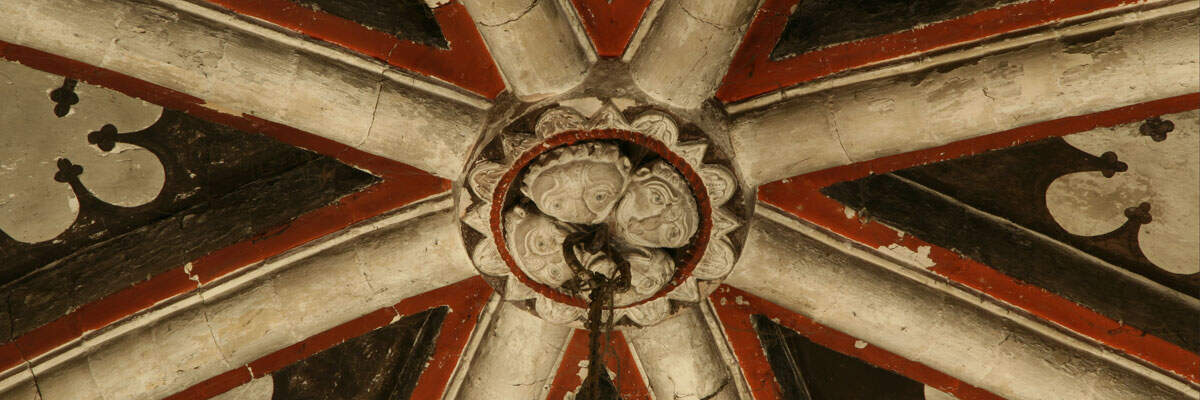The font is usually assumed to have been made for the Austin canons’ priory of the Holy Trinity, Ipswich, founded, according to Leland, by Normanius Gastrode, filii Egnostri. This priory was sometimes known as Christ Church, a name that occurs as early as the reign of Richard II. At the beginning of the 13thc. the priory held considerably possessions, including the Ipswich churches of the Holy Trinity, St Lawrence, St Mary-le-Towers, St Mary-at-Elms, St Michael, and St Saviour, and the churches of 'Wilangeda,' Henham, Layham, Foxhall, and Preston, and moieties of the churches of Tuddenham and Mendham. It also held lands in Nacton, Helmingham, Hemingstone, Bramford, Delf, Coddenham, Tunstall and Tuddenham. The font may not have survived that long. In 1194 the priory was rebuilt by John de Oxford, Bishop of Norwich following a fire, and Blatchly and Haward suggest that the font may have cracked and been discarded when it was subjected to the intense heat. The house was suppressed in 1536-3and and the site and lands subsequently granted to Sir Humphrey Wingfield and Sir Thomas Rushe. Christchurch mansion, on the priory site, is now part of the Ipswich Museum Service.



